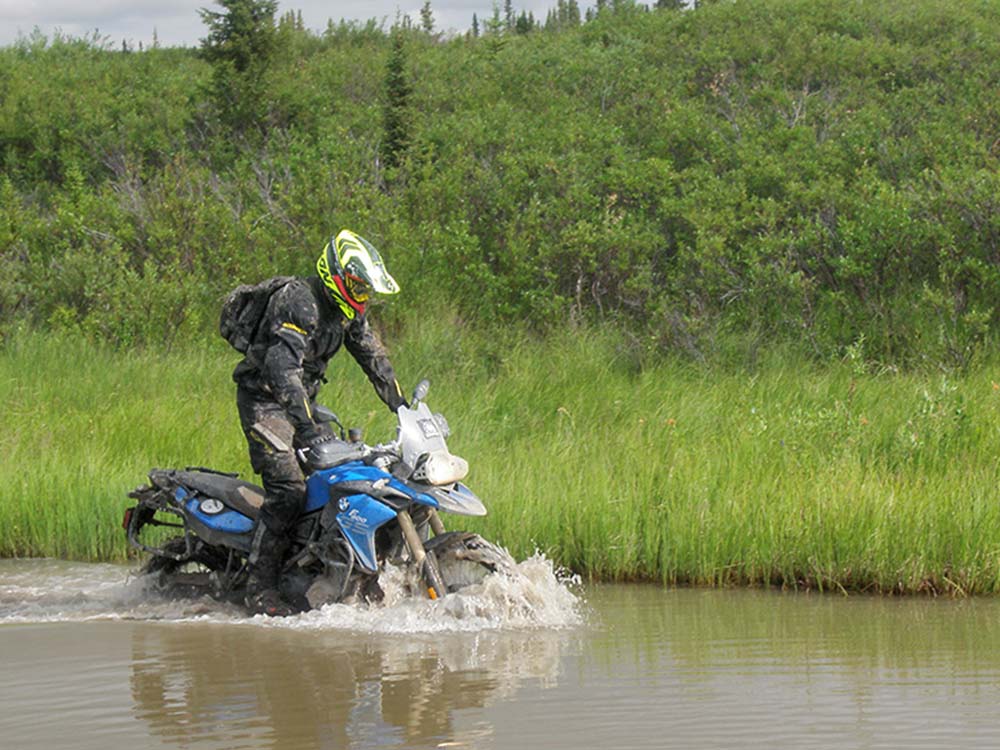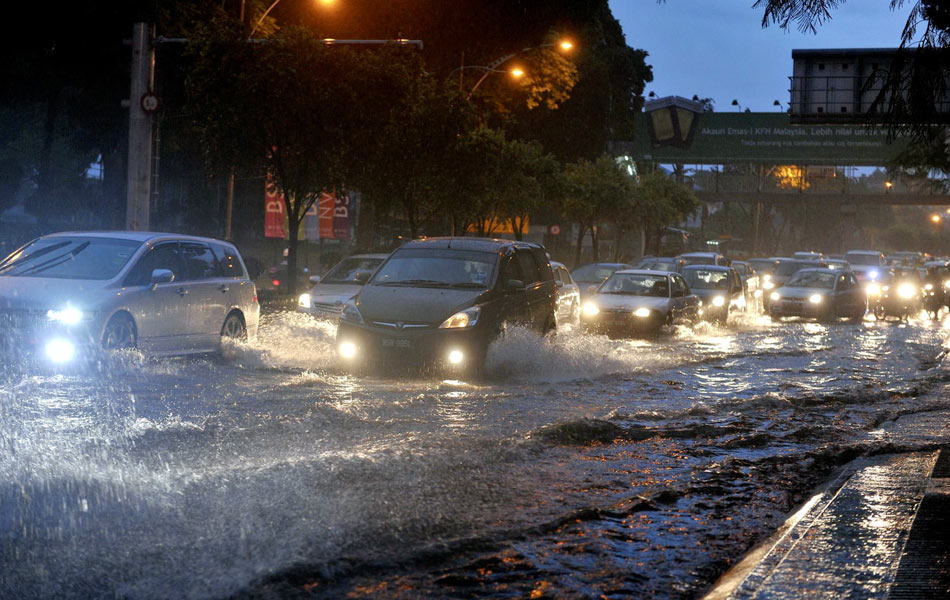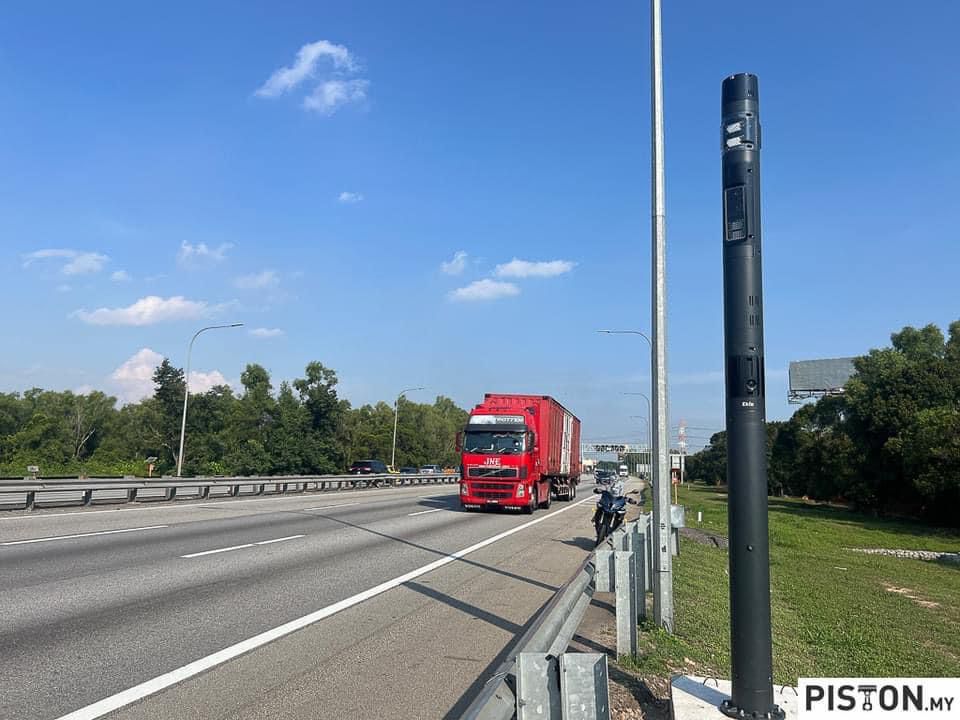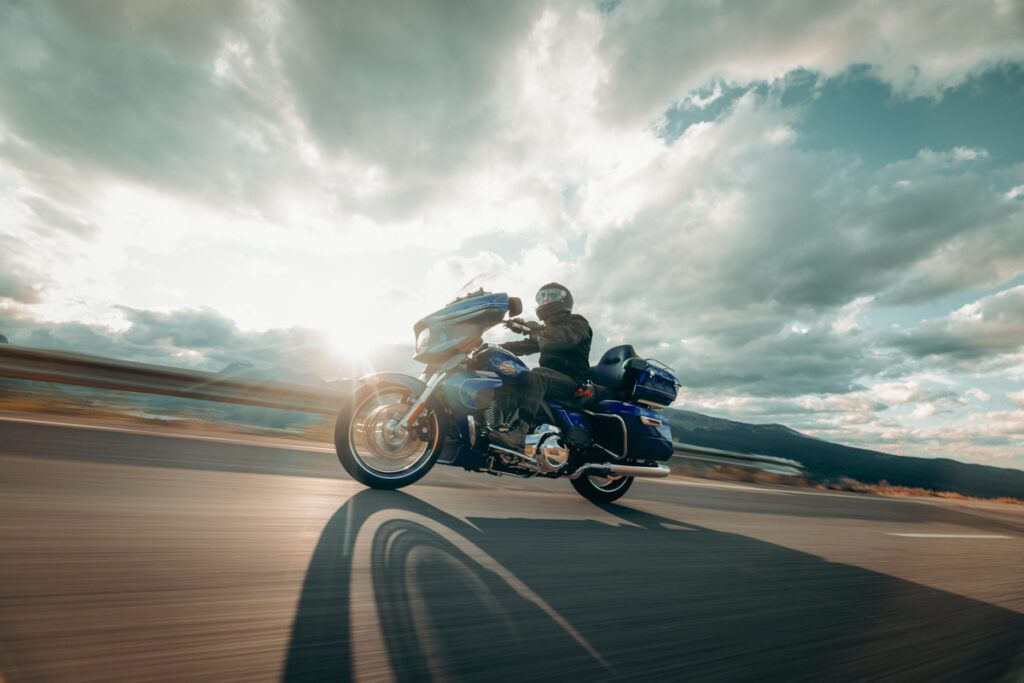It is now in the middle of the transitional season in Malaysia, bringing sudden thunderstorms and heavy downpours. And as expected, there will be flash floods, like this morning on 15 October 2024.

While it is safest to sit out from riding in pouring rain and flooded roads, there is no escaping it at times, especially around flood-prone areas where the roads remain flooded even after rain has stopped.
Here are our tips for riding through flash floods (and deep puddles of water).
1. Stop and inspect

Treat riding through deep water like like it is adventure riding. No sane adventure rider will just blast headlong into an unknown body of water without first inspecting its depth, potential hazards underwater and exit on the other side.
While you may not have to get off your bike and walk through floods on the road you travel on each day, you do need to stop and look for clues. If there is another vehicle pushing through the water, note how deep it is. Observe if there is a strong water current from one side of the road to the other.
If the water is too deep or current’s too strong, forget it. Just wait for it to subside.
If you do not already know the location of your engine’s air intake, now is the good time to start. Check if it is high enough above the water. (This also applies to car drivers.)
2. Stand Up

Standing up on the footpegs promotes better stability at slow speeds, allowing you to control the bike. It can also keep your head hence eyes above water splashes so you can see where you are going.
3. Go Slow (and straight)

This goes without saying.
Throwing up a big splash may look spectacular in pictures but it is not a good idea in real world situations unless you are riding an enduro motorcycle. Hitting a deep body of water at speed would most turn the water into a liquid brake/barrier. The bike will cut through the first few metres easily before coming to a sudden halt and causing the rider to lose control (or even thrown off).
Keep your speed steady and as low as possibleto keep the water’s bow wake below the height of the engine’s air intake. Remember, you are riding a motorcycle, not a jetski.
It is also best to stay off the sides of the road and ride in the middle of the lane as roads in Malaysia are typically higher in the middle.
4. Keep moving

Do not pull in the clutch or shut the throttle abruptly.
Maintain a steady throttle and speed in the gear you are in right now, even if you should feel a tyre or tyres kicking loose when contacting something in the water. In fact, you should open the throttle a bit more if that happens.
Roll off the throttle smoothly if you need to slow down more and stay off the brakes.
5. Exiting

Do n0t gun it immediately after exiting the flood. You may increase your speed, but do not slam open the throttle, without first giving the time for the water or whatever debris collected on the bike to “drop off.”
Also, with the bike still moving, apply the brakes lightly to clean them.
6. Kill It!

But what if you hit, for example, a pothole and the bike goes down?
Make the effort to kill the engine before you lay the bike down into the water. You would most probably have the time to do so since you were riding at a slow speed, right? Right? Regardless, the engine should be shut down as quickly as possible.
An internal combustion engine is basically an air pump which sucks in air, adds fuel to it, compresses the mixture and sets it alight. But water is incompressible and non-combustible (duh!), and therefore has the potential of causing catastrophic engine damage.
Do not immediately attempt to start a motorcycle that has been lying underwater. Instead, you should pull out the spark plugs and the airbox cover to check for water ingress. If the spark plug electrodes are wet, do not reinstall them, but turn on the bike’s ignition and crank the starter a few times to push the water out of the combustion chamber.
Reinstall only when it is sufficiently dry.
Conclusion
Riding through a flood is n0t difficult but one should do it with care and logic, obviously. Sticking to the above steps will have you home way ahead of car drivers, instead of ending up swimming in that filthy water. Think of it as urban adventure riding.

















